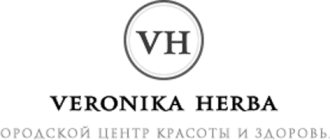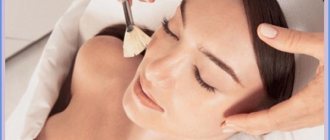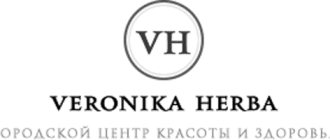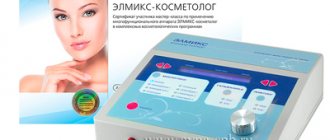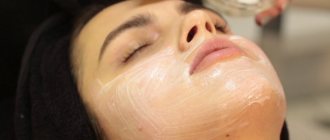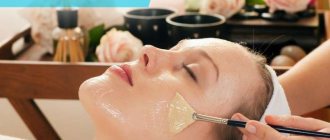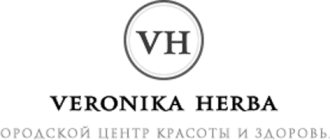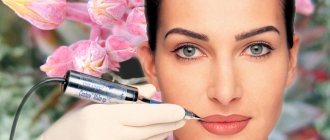From this article you will learn:
- What is a glycolic facial peel?
- How is glycolic facial peeling performed in beauty salons?
- What is glycolic facial peeling like?
- What are the indications and contraindications for glycolic facial peeling?
- What are the advantages and disadvantages of glycolic facial peels?
- What side effects can you expect after a glycolic facial peel?
- How often can you do a glycolic facial peel?
- How much does glycolic facial peeling cost in beauty salons?
- How to make a glycolic facial peel at home
- How to do glycolic facial peeling at home step by step
Recently, acid peeling has been in great demand. This cosmetic procedure has many advantages: it tightens and rejuvenates the skin, reduces visible wrinkles, freckles and age spots. Acid peels are performed in professional salons, but today some of them can be done at home without the help of specialists. In our article we will tell you what glycolic facial peeling is, consider the benefits of this procedure, and introduce you to the rules of skin care after it.
What is a glycolic facial peel?
This chemical facial peel is performed with glycolic acid. Previously, this acid was made from sugar cane. Now the production is based only on artificial drugs. The solution affects the topmost layer of skin (epidermis). Fruit acid kills old cells while stimulating the functioning of others at deeper levels. Thanks to this, we observe a noticeable rejuvenation effect. The face acquires a healthy color and becomes fresher. The condition of the skin improves.
Let us repeat that glycolic acid belongs to fruits. In nature, it can be found in sugar cane and unripe grapes. Thanks to its composition, it is able to quickly penetrate the skin, activating rejuvenation processes.
Glycolic peeling for the face at home involves treating the skin with a special composition containing acid. During the procedure, dead skin cells, impurities, and toxins are removed.
Under the influence of the solution the following occurs:
- collagen production;
- stimulation of skin cell regeneration;
- activation of internal processes in the body;
- cleansing the upper layers of the epidermis;
- decreased sebum production;
- reduction of wrinkles;
- skin protection from ultraviolet radiation;
- moisturizing the skin;
- increasing skin tone;
- reducing the visibility of age spots;
- reducing the number of acne.
During peeling, the top layer of skin is affected. The destruction of dead cells provokes the production of natural collagen. Due to this, skin renewal and regeneration occurs. The first visible effect is noticeable a couple of hours after the procedure.
Read the material on the topic: Chemical peeling of the face: your skin will breathe a new breath!
Over the past decades, interest has sharply increased and the range of acid peels used in cosmetology practice has expanded.
The composition of these peels mainly includes hydroxyacids (HA), known in wide practice as both fruit acids and non-fruit acids. Fruit acids include alpha hydroxy acids, or abbreviated AHA acids (glycolic, lactic, malic, tartaric, citric), beta hydroxy acids BHA (salicylic acid), polyhydroxy acids PHA (gluconic and gluconolactonic), and bionic acids BA ( lactobionic, maltobionic, cellobionic), as well as phytic, succinic, azelaic acids. This interest is associated with the unique properties and capabilities of acid peels in solving aesthetic skin problems.
Characteristics of hydroxy acids
Let's consider the effects of AHA acids on the skin. Fruit acids got their name due to their content in fruits, and the chemical name - alpha hydroxy acids - due to the hydroxyl group located in the alpha position of organic carboxylic acids. In the body, fruit acids take an active part in metabolism, being metabolites of many chemical reactions.
Spectrum of biological activity of AHA acids
The effects of AHA peels are more gentle and depend on the acid pH concentration and molecular weight.
The exfoliating exfoliating effect of AHA acids is associated with their effect on corneocytes and the ability to weaken their cohesion with horny scales in response to increased peeling of the skin and through increased loss of transepidermal water, stimulating the activation of basal cells and thickening of the proliferative layer of the epidermis.
The moisturizing effect of AHA is associated with the removal of the old stratum corneum, which does not have a natural moisturizing factor (NMF) and creates a moisture deficiency in the skin, since the moisturizing factor of only young keratinocytes is not enough to hydrate the entire stratum corneum of keratinocytes.
After the exfoliation of old corneocytes and the release of young NMF horn cells to the surface, the skin hydration indicator significantly increases. In addition, citric and lactic acids are components of NMF, thereby increasing its functional content in the skin.
One of the effects of AHA acids is to enhance the synthesis of glycosaminoglycans, collagen and the intercellular substance of the dermis, which makes the skin smoother, firmer and more elastic. Fruit acids also have antioxidant properties, protecting the skin from the effects of reactive oxygen species, and can lighten the skin and reduce hyperpigmentation.
Thus, under the influence of acids in the epidermis, the proliferative keratinocyte layer is built up, the stratum corneum is leveled and thinned, and the intercellular dermal matrix is strengthened, thereby thickening the dermis.
Alpha hydroxy acid peels contain the following acids:
- Glycolic acid is the smallest and most popular of the AHA acids, its molecular weight is 76.05 g/mol, and therefore easily penetrates the epidermal barrier. Contained in sugar cane, green grapes, sugar beets, it promotes the production of type 1-3 collagen and is the main component of modern AHA peels, both professional and home.
After a thorough study of the effects of glycolic acid on a living culture of human fibroblasts, scientists made the following conclusions: the depth of penetration of glycolic acid in the epidermis depends not only on its concentration and exposure time, but also on pH.
The lower the pH of the drug, the higher the permeability of glycolic acid and the higher its irritating ability. There is a very close relationship between the pH of glycolic acid and its effect on the rate of renewal of epidermal cells and the degree of skin irritation. At a concentration of 70% pH 3, the acid gives a noticeable stimulating effect, but also a noticeably high degree of skin irritation; if the acid solution is neutralized to pH 7, the stimulating effect becomes insignificant, but the skin irritation becomes noticeably less. The use of this substance in a low concentration - about 20-30% and a pH of 2-3 for a long time leads to increased exfoliation of dead cells. At the same time, the complexion is evened out, and the surface of the skin becomes smoother.
Relationship between glycolic acid pH, cell turnover rate and skin irritation
- Lactic acid - with a molecular weight of 90.08 g/mol is a product of biofermentation of sour milk, sauerkraut, blueberries, apples, tomatoes and other products. The exfoliating and moisturizing ability comes first. But compared to glycolic acid, lactic acid is gentler and can therefore be used on sensitive skin.
Lactic acid has the same properties as all AHA acids. I would like to pay special attention to its moisturizing properties. At the molecular level, it is part of NMF, adjacent to amino acids, urea, pyrrolidone carboxylic acid and other components.
Lactic acid binds and retains moisture, creating a kind of water shell around itself. Moreover, moisture is not only collected, but also correctly redistributed towards the deep, living layers of the skin, which allows you to create the effect of balanced hydration in the epidermis. Another useful property of lactic acid is to enhance the barrier functions of the skin, promoting the production of ceramides, which, together with cholesterol and fatty acids, form a lipid layer, due to which the skin loses less moisture and better resists stress factors and water-saving mechanisms work not only on its surface, but also inside the dermis. The whitening property of lactic acid is based on both its exfoliating ability and the effect of lactic acid on blocking tyrosinase, which is responsible for skin melanogenesis. The antibacterial properties of the acid are based on the acidifying effect, as well as special laction particles, which slow down the development of many microorganisms.
Photo 5. Therapy for skin photoaging, woman, 62 years old: a - right hand after 6 months of using placebo lotion; b — left hand after 6 months of using lotion with 25% lactic acid (the skin is denser and more elastic, the number of age spots has decreased)
- Malic acid (malonic, hydroxysuccinic acid) - molecular weight 134.1 g/mol, isolated from the pulp of unripe apples and tomatoes, grapes, gooseberries, rhubarb, rowan fruits, barberries, raspberries. In general, apple peeling is a special case of fruit peeling, in which the concentration of malic acid among other fruit acids is 10-15%.
At the same time, malic acid peeling is not only characterized by moderate results in smoothing out deep wrinkles and scars, but also effectively helps in polishing and evening out the complexion and increasing firmness and elasticity, as it actively stimulates cellular metabolism.
- Tartaric acid (tartaric acid) , molecular weight 150.087 g/mol. The main sources of tartaric acid include dried wine yeast and tartar, which forms on the walls of the vessel during wine fermentation. Tartaric acid is a strong antioxidant and biostimulant. Being part of any cosmetic product, it has an exfoliating and moisturizing effect.
The result of acne treatment with a combined course of booster peels: a - before treatment; b - after. When carrying out peeling after applying glycolic acid to the skin, a composition containing 20% mandelic and 10% citric acids was additionally used
- Citric acid is found in citrus fruits (lemon, lime, grapefruit, orange). It has the highest molecular weight of the AHA acids described above - 192.12 g/mol. It has a whitening effect on the skin, which is enhanced in the presence of tartaric acid. Has antioxidant and bactericidal properties.
- Mandelic acid is obtained by hydrolysis from bitter almonds. The large molecular weight of this acid promotes slow diffusion into the epidermis and makes almond peeling very gentle, suitable for patients with various skin types, including sensitive ones. By gently loosening the superficial stratum corneum, this peeling has a delicate exfoliating effect that evens out and brightens skin tone. The lifting effect is due to the production of collagen and elastin, due to this, cellular renewal is activated and shallow wrinkles are smoothed out. Almond peeling can be used in the summer, as the risk of developing hyperpigmentation after the procedure is minimal. Having a structural similarity to macrolide antibiotics, it suppresses the proliferation of pathogenic skin flora and thereby reduces the risk of infection and skin inflammation.
Mandelic acid is capable of binding heavy metal salts, having powerful antioxidant properties. Improves inflamed acne by clearing and removing blockages in the sebaceous gland ducts, thereby reducing and tightening pores and removing black comedones.
- Salicylic acid is a beta-hydroxy acid because its hydroxyl group is bonded to the carbon atom in the β position (next to α in the hydrocarbon chain) and is fat soluble. Salicylic peeling has been used in cosmetology for a long time, but has not yet lost its popularity. Possessing high penetrating ability and a keratolytic effect, this beta acid causes active peeling at the mouth of the hair follicle, which prevents the formation of comedones.
Salicylic peeling, depending on the concentration and pH, can be superficial or mid-superficial. Superficial salicylic peeling is used for problematic oily skin and acne. The concentration of salicylic acid in this case is 15-20%, and the pH is from 2 to 3.5.
When using salicylic peeling with higher concentrations and low pH, deeper peeling occurs. By exfoliating the entire stratum corneum and the top of the proliferative keratinocyte layer of the epidermis, salicylic acid not only stimulates the active production of collagen and elastin, but also leads to active stimulation of basal cells and renewal of the epidermis. Therefore, this beta acid is widely used in the fight against aging skin and other signs of aging, such as rough, rough skin. After the procedure, the skin is tightened, smoothed, sagging is eliminated, and the appearance noticeably improves. In addition to the rejuvenating effect, salicylic peeling has a keratolytic effect, which significantly improves the condition of oily skin prone to acne. The lightening effect is associated with a pronounced exfoliating effect, in which horn cells with spent melanin are removed. Salicylic peeling has many advantages, such as easy implementation and controllability of the procedure, the possibility of carrying out the procedure at any age, as it is suitable for patients with a high level of skin photoaging, can be used both on the face and on any part of the body, applicable to all four skin phototypes, minimal number of contraindications. Salicylic acid, which is quite harsh and aggressive in itself, is rarely used in its pure form; to soften it, fruit acids are added to the peeling composition.
- Pyruvic acid is the second lipophilic acid in modern peels. Pyruvic acid (PKP) is α-ketopropionic acid, or pyruvate, an organic keto acid that has the properties of carboxylic acids and ketones, and is also the end product of the glycolytic breakdown of glucose. Pyruvic peeling is obtained from tartaric and lactic acids. It has a sharp, unpleasant odor, but does not cause allergies, since it has a similar composition to skin and is completely recycled in human tissue. PVK is found in all tissues of the body and takes part in many biological processes. Low molecular weight - 88.06 g/mol - combined with lipophilicity gives PVC a high penetrating ability, more than glycolic, but controlled like trichloroacetic acid. When it comes into contact with the skin, PVC is hydrolyzed and converted into lactic acid, which is part of the skin's moisturizing factor and provides good hydration to the skin.
Therefore, PVC is used in the correction of the following aesthetic problems: seborrheic dermatitis, rosacea, hyperpigmentation, photoaging, dermal atony, dark circles under the eyes.
Acids used in later cosmetology practice
- Azelaic acid (nonanedioic acid) is a dibasic saturated carboxylic acid that has all the chemical properties characteristic of carboxylic acids. It is obtained by ozonolysis or oxidation of oleic or linoleic acid. It has pronounced antioxidant properties, models the processes of keratinization in the sebaceous glands with closed comedones and seborrheic dermatitis.
Inhibits the action of 5-α-reductase, reduces sebum production, normalizes the process of sebum formation, thereby preventing the appearance of black comedones. It has an antimicrobial effect on opportunistic skin saprophytes Propionibacterium acnes and Staphyloccocus epidermidis. The whitening effect of azelaic acid is similar to hydroquinone, which is achieved by inhibiting the enzyme tyrosinase, and also inhibits the synthesis of DNA and RNA of melanocytes, slowing down the proliferation of keratinocytes.
Azelaine peeling
Azelaine peeling is a superficial peeling and is used to solve dermatological problems: demodicosis, acne and post-acne, ingrown hairs, hyperpigmentation, rosacea, folliculitis, rosacea, melasma, seborrheic dermatitis, etc.
In addition to azelaic acid, manufacturers often add lactic, citric, glycolic, salicylic and almond acid to this peeling, which, depending on the proportions and concentration, eliminate varying degrees of severity of skin diseases.
The main active component of the peeling preparation in this case is azelaic acid with a concentration of 15-30% and pH 1.8-1.3. Azelaine peeling is easily tolerated, has a mild irritating effect on superficial tissues, and does not require a long recovery period.
- Phytic acid , or myo-inositol hexaphosphoric acid, is found naturally in cereal seeds, legumes, some vegetables, and also in oilseeds. Due to its high molecular weight of 660.04 g/mol, even at a high concentration of 50% and a low pH of 1.2, it does not cause damage to the deep epidermal layers. It has been proven that phytic acid, along with a deep and very gentle cleansing and exfoliating effect, has the ability to inactivate the enzyme tyrosinase, the excessive production of which leads to hyperpigmentation. This determines the high antioxidant, lightening and anti-inflammatory properties of phytic acid, which contribute not only to the effective prevention of the appearance of age spots, but also to the rapid elimination of existing ones. Along with this, phytic acid has a good rejuvenating and lifting effect, narrows enlarged pores, fights keratomas and rosacea.
Phytin peeling
Phytin peeling is superficial. Its implementation does not require neutralization. In addition to phytic acid, peeling compositions often include a high percentage of glycolic or tartaric acid. Experts classify phytin peeling as an all-season peel and recommend using it even during periods of high solar activity.
Polyhydroacid peeling
- Polyhydroacid peel with gluconolactone, or D-gluconic acid δ-lactone, is an ester with a cyclic structure.
Gluconolactone is found naturally in honey, wine, corn, some fruits and tea. Its action is similar to that of α-hydroxy acids, but the properties of polyhydroxy acids have significant differences. Being an AHA acid with five hydroxyl groups in the molecule, it has more pronounced moisturizing properties. The absence of a carboxyl group in the ether form of the molecule helps eliminate the irritating effect on tissue. Thanks to its high molecular weight, this peel slowly penetrates the epidermis, thereby not causing a pinching effect on the skin, and is therefore recommended for the most sensitive skin. Gluconolactone is a natural antioxidant, comparable to vitamins A and E, capable of blocking processes that activate the synthesis of interleukin-1 to suppress inflammatory reactions in the skin. Gluconolactone modulates skin pH, which helps restore the acid mantle of the epidermal barrier also by activating lipid synthesis in keratinocytes. An important mechanism promoting hydration is the ability of gluconolactone to transport water molecules, thereby stimulating the lipid synthesizing activity of keratinocytes through a decrease in the concentration of calcium ions. The brightening property of gluconolactone is associated with the ability to form chelate complexes with metals and remove free radicals. The latter may be iron, contained in skin cells and causing natural oxidation processes. Excess iron, combined with exposure to ultraviolet radiation, causes more pronounced pigmentation - a typical sign of bio- and photoaging.
Gluconolactone initiates both the synthesis of the dermal matrix of the skin, elastin and collagen, and the production of the ground substance of the dermis
- hyaluronic acid. Its keratolytic effect leads to an even skin tone.
- Bionic acids belong to another group of polyhydroxy acids. The leader in cosmetology practice is Lactobionic acid, or 4-O-β-galactopyranosyl-D-gluconic acid. It consists of gluconic acid and galactose connected by an ester bond, formed due to the oxidation of milk sugar.
The stabilizing properties of lactobionic acid are associated with the ability to synthesize chelate compounds with metals of variable valence, including iron.
Being, like gluconolactone, a substance with a large molecular weight, it slowly penetrates the skin and does not cause an irritating effect, does not provoke excessive peeling, hyperemia and itching of the face. Galactose, which is part of lactobionic acid, promotes rapid recovery and rapid regeneration of damaged skin structures. Therefore, lactobione peeling can be used for active recovery after traumatic procedures such as laser resurfacing, plastic surgery, deep peelings, microdermabrasion.
And the property of this acid to inhibit matrix metalloproteases, when activated, destroys the main components of the dermal matrix, helps combat photoaging. After application to the surface of the skin, lactobionic acid creates an aqueous film, which for a long time prevents the skin from drying out and the development of an unpleasant feeling of itching and tightness. The gentle exfoliating effect allows you to use this peeling during the work week. And powerful photoprotective properties allow you to use lactobionic acid along with mandelic acid in the summer, without fear of the appearance of age spots.
- Succinic, or butadionic acid (mineral organic resin) is another amazing substance that is extracted from certain plants and amber. It is also synthesized in the human body and does not have the aggressive properties of other chemical compounds. Butadionic acid strengthens capillary walls, improving microcirculation. It improves cellular respiration processes and is capable of restoring and rejuvenating aging tissues, has a mild effect and is used in the treatment of rosacea, hyperpigmentation, hyperkeratosis, and dermal atony.
Conclusion
Typically, professional peelings include not one acid, but several, a so-called cocktail, which allows you to potentiate the positive effect and deactivate the negative effect on the skin. And we should not forget that the deeper the peeling affects, the more pronounced the effect on the skin it has, but the risk of complications such as pigmentation, herpes, inflammatory processes, and the formation of secondary dryness due to the appearance of a keratohyalin film increases.
Therefore, in order to achieve maximum effect, it is equally important to pay great attention to the further rehabilitation period at home, using creams that can quickly restore the epidermal barrier of the skin, and these creams should contain a minimum content of synthetic chemical components.
Natalya Skurikhina, biochemist, dermatocosmetologist, developer of peelings and cosmeceuticals SuNViPeel, cosmetic line Vinas, technologist of natural cosmetics Organic AllSkin, member of the association of doctors KALDAT (South Korea), head of the “School of Peels”, Almaty
How is glycolic facial peeling performed in beauty salons?
- Preparation.
If you are doing a glycolic peel for the first time, you need to prepare your skin in advance for the effects of the active substance. To do this, apply products with one of the acids to your face every evening: citric, mandelic or glycolic. Almond is weaker than the others, so it can be safely used to treat sensitive skin.
- Peeling.
The procedure begins with cleansing the skin of impurities and cosmetics. Next, the specialist proceeds directly to peeling. The acid is applied to the forehead, chin, nose and cheeks. The area around the eyes should remain untouched.
The exposure time of the drug ranges from 2 to 15 minutes. The exact period should be selected by a cosmetologist, taking into account the sensitivity of the epidermis and the concentration of acid in the chosen product. During the procedure, you must carefully monitor the skin's reaction. If redness, itching and burning begin, a specialist should remove the mixture.
Glycolic facial peeling is removed with a neutralizer. After this, the skin should be rinsed with cold water and a nourishing mask should be applied.
- Recovery phase.
A nourishing mask after the procedure is enough for the skin to recover. However, if desired, you can use a sedative. Choose formulations with wheat oil, jojoba oil or grape seed extract.
To avoid negative consequences from the procedure, follow the following rules for further skin care:
- During the recovery period, you should stop using decorative cosmetics.
- It is also recommended to avoid visiting baths and saunas.
- To ensure that glycolic acid facial peeling gives the desired effect without skin irritation, apply a strong sunscreen before sun exposure.
Read material on the topic: Fruit peeling: in a beauty salon and at home
Benefits of peeling
- Less traumatic and comfortable to carry out
- Does not have systemic effects
- Does not develop addiction
- Minimum rehabilitation period
- Low complication rate
- High efficiency
- Peeling can be used to correct a wide range of aesthetic problems (the optimal indication is age-related changes or prevention of aging)
Indications for peeling
- Skin withering
- Seborrheic skin
- Acne
- Hyperkeratosis
- Hyperpigmentation
- Follicular hyperkeratosis
- Ingrown hair syndrome
- Peeling can be performed as a preparation for other cosmetic procedures.
Contraindications
- Individual intolerance to peeling ingredients
- Violation of the integrity of the skin
- Active inflammatory process on the skin
- Herpes in active phase
- Severe somatic diseases
- Skin types IV–V according to Fitzpatrick
- Pregnancy, lactation
- Prolonged exposure to the sun
Home care products
- Vegelip Mesaltera Moisturizing Cream
- Prepeel Active MCP Pre-Peeling Cream
- Cleanser mousse Medic Control Pee (MCP)
Preparations required for the peeling procedure
- Cleanser mousse MCP
- Glycolic peeling Glycoliсpeel 35%, 50% or 70% (pH 1.7)
- Neutralizer
- Antioxidant mask VC-IP Mask
- Revitalizing cream Vegefarma MCP
Types of glycolic peeling for the face
There are two types of glycolic peeling:
- surface (with acid content less than 40%);
- aggressive (composed of 40–70% acid).
How are these two procedures different?
- Superficial peeling.
During the session, the upper layers of the epidermis are affected. Recovery is accompanied by redness of the skin. This is normal and traces should disappear after 48 hours. It is convenient to perform such a glycolic peel a few days before an important event.
- Aggressive peeling.
It affects the deeper layers of the skin, eliminating the problem of acne and post-acne and reducing pigmentation. This glycolic facial peel is suitable for women 30 years and older. After the procedure, pain, peeling and hyperemia are possible.
Recommended articles on the topic:
- How to properly care for your skin
- How to remove wrinkles on the face: the most effective methods
- Microcurrent facial therapy is a beneficial treatment for your skin
Advantages
It has a high penetrating ability and a pronounced exfoliating and stimulating effect.
Keratopeel, pH 1.4
A preparation for superficial chemical peeling based on the alpha & beta complex - a combination of AHA (glycolic acid 40%) and BHA (salicylic acid 2%). Due to the rather high content of glycolic acid in combination with the low pH of the composition, KERATOPEEL has a stimulating effect on the dermis, activating the synthesis of collagen and glycosaminoglycans. Salicylic acid is a well-known keratolytic that enhances the penetration of glycolic acid and has a pronounced proliferative effect. The basis of the drug is isopropyl alcohol, which has excellent keratolytic and degreasing properties. The technique of this peeling, as an independent procedure, is not much different from the usual GLYCOLICPEEL, however, it should be taken into account that, due to its properties, KERATOPEEL penetrates the epidermis more aggressively. It is possible to obtain a spot frost effect.
In addition, KERATOPEEL can be used as a keratolytic agent during the retinoic peeling procedure Block Age Peel Cream to ensure good penetration of retinoids in rough skin with severe signs of hyperkeratosis. In this case, the exposure time of KERATOPEEL on the skin should not exceed 15-20 seconds, after which the composition is neutralized using a neutralizer (Neutralizator). The patient washes, the skin is dried and then Block Age Peel Cream is applied according to his protocol. Glycolic peeling with salicylic acid.
Indications and contraindications for glycolic facial peeling
Professionals say that this peeling option is indicated for:
- preparation for plastic surgery or other complex beauty procedures;
- significant pigmentation, acne, pimples, post-acne, comedones;
- the presence of small wrinkles, folds and other age-related changes;
- ingrown hair problem;
- hyperkeratosis;
- dry skin;
- presence of large pores on the face;
- deep acne scars;
- scars, stretch marks;
- molluscum contagiosum.
Glycolic peeling for the face is a completely safe procedure, but experts advise paying attention to contraindications.
It cannot be done in the following cases:
- In spring or summer.
- If you are pregnant or breastfeeding.
- If there are warts in the area of the face where peeling is planned.
- With herpetic disease in the acute stage.
- With telangiectasia.
- If you have recently been in the sun for a long time or have been tanning.
- If there are wounds, scratches, or inflammation at the site of the intended peeling.
- Brunettes with dark skin and dark eyes.
- If you suffer from intolerance to one of the elements of the mixture. To ensure that glycolic facial peeling does not have negative consequences for the skin and the body as a whole, do an allergy test before the procedure.
- For rosacea.
- After chemotherapy or hormonal therapy.
- For severe photosensitivity of the skin.
- After microdermabrasion treatment.
- For vascular problems.
- After recent hair removal.
- When using retinoids.
Read material on the topic: Almond peeling for the face: features of the procedure
Peeling protocol
Stage I. Pre-peeling preparation
For 14–21 days, Prepeel Active cream is applied to the facial skin cleansed with Cleanser mousse at night, depending on the indication. Apply MediScreen sunscreen with antioxidants in the morning.
Stage II. Chemical peeling
1 step. Cleansing. Apply Cleanser mousse to facial skin, spread with light massage movements and leave for 2-3 minutes to 20-30 seconds. Rinse with water. Step 2. Apply the peeling gel with a brush to the entire surface of the facial skin in the direction from the periphery to the center in the following sequence: forehead, temples, chin, eyelids. The signal to begin neutralization is the appearance of signs of erythema and the patient’s subjective sensations in the form of a burning sensation. Exposure time averages from 30 seconds to 5 minutes. If you experience a subjective sensation of intense burning, you should immediately neutralize the peeling composition. Step 3. Using another brush, apply the neutralizing solution to the skin in reverse order. Leave on for 2-3 minutes, then rinse with water. If necessary, repeat neutralization. Step 4 Apply the antioxidant mask VC-IP Mask. Wash off after 10-15 minutes. Dry the skin. Step 5 Apply Vegefarma cream to the skin.
Stage III. Post-peeling care
During the day, the patient should use Vegelip moisturizing cream, apply MediScreen sunscreen in the morning, and Postpeel Light cream at night. Depending on the indications, creams can be used.
Expected reactions after peeling
– Minor erythema that disappears within a few hours after the procedure. – Moderate peeling of the skin.
Peeling programs
The basic course consists of 5–10 procedures, which are performed at intervals of 7–14 days.
- For age-related skin changes, to prevent biological (natural) aging, the procedure is carried out once every 10–14 days. The intensive course includes 10 procedures 1–2 times a year. Maintenance course – 1 procedure every 1–1.5 months. In sessions 1–3, 35%–50% glycolic acid is used, starting from session 4 – 70%. The exposure time of the peeling solution is strictly individual.
- To prevent photoaging, peeling is performed once every 7–10 days. The intensive course consists of 6–10 procedures once a year. Maintenance course – 1 procedure every 1–1.5 months. In sessions 1–3, 35%–50% glycolic acid is used, starting from session 4 – 70%. The exposure time of the peeling solution is strictly individual.
- For seborrhea, peeling is performed with 35% and 50% glycolic acid once every 7–10 days. The course is selected individually.
- For acne, peeling is performed with 35% and 50% glycolic acid once every 7–10 days. Peeling is performed for mild acne (no more than 7–10 inflammatory elements). It is preferable to begin the course of treatment with peelings with salicylic or mandelic acids.
- For hyperkeratosis, formulations of varying concentrations are used depending on the age of the patient. The course includes up to 10–12 procedures.
- For hyperpigmentation, it is recommended to use Glycolicpeel Whitening peel in combination with depigmentation therapy with Medilight. The main rule is to carefully influence areas of dyschromia!
- In preparation for plastic surgery, a course is prescribed consisting of 5-6 procedures with 50% acid, then 3-4 procedures with 70% acid with an interval of 10-14 days.
Advantages and disadvantages of glycolic peeling for the face
Pros of glycolic peeling:
- The first effect will be noticeable within a few hours after the procedure.
- Rapid restoration of facial skin.
- Solves many problems: stops aging, eliminates various defects, unevenness, wrinkles. Facial rejuvenation occurs.
In the photo below you can compare your face before and after glycolic peeling.
Disadvantages of the procedure:
- After the session, peeling and redness of the skin is possible. Their duration ranges from several hours to a couple of days.
- More significant consequences are swelling and the appearance of crusts on the face. You should consult a cosmetologist about treatment.
- In rare cases, the effect of glycolic peeling does not occur.
- High price for a one-time session.
- Some girls complain that after the procedure, skin pigmentation and other serious abnormalities begin.
Reviews of facial peeling with glycolic acid can be found on the Internet.
Read material on the topic: Depigmenting peeling: everything you wanted to know about it
Glycolic acid: properties and benefits for skin
Among all alpha acids with hydroxyl properties, glycolic has the lowest acidity and small molecular weight. Such features help to penetrate the skin faster and act on it. The effectiveness of the product directly depends on its pH level. At low values, the substance acts more strongly.
Glycolic acid for skin is a universal remedy for rejuvenation, cleansing and brightening. The results of its impact are visible after short-term use. The face smoothes and glows, which is why the names of many skincare products with glycolic acid contain the prefix glow. The effect is especially noticeable on aging skin, where the natural renewal of cellular structures is slowed down.
Glycolic acid helps cope with a number of problems:
- treats acne by removing dead skin particles and preventing pores from becoming clogged;
- gently removes dead cells, brightening the face;
- starts the process of rejuvenation of aging skin cells and saves from pigment spots;
- helps maintain balance for oily or problematic skin;
- Helps smooth out acne marks and small scars.
Glycolic acid destroys the compounds of dead cells, so that subcutaneous fat does not stagnate in the pores. This helps to cope with the characteristics of oily skin and gets rid of acne. Among other things, products with glycolic acid significantly tighten pores, which makes the face smoother.
Side effects of glycolic facial peels
The glycolic facial peel procedure may bring some side effects and complications. Usually, negative consequences arise if a low-quality drug was used, as well as if the choice of exposure time for the product was unsuccessful.
Possible problems:
- Swelling of the skin.
This phenomenon becomes noticeable a few hours after peeling. The swelling should go away on its own, but in the future you should perform the procedure more carefully.
- Burns.
Symptoms include severe burning of the skin and significant redness. To solve the problem, wash your face with cold water and apply a soothing cream.
- Allergic reaction.
Glycolic facial peels may cause an allergic reaction. To avoid this, take a test in advance to identify intolerance to the elements of the drug. The test is as follows: a little acid is placed on the bend of the elbow or wrist and left for 7-10 minutes.
You are allergic if you experience:
- burning;
- redness;
- swelling and itching at the site of exposure to the solution.
If you have at least one of the listed symptoms, this procedure cannot be done.
- Dark spots.
If you are prone to pigmentation, peeling may cause dark spots to appear.
- Dryness.
Negative consequences such as dryness and flaking are also possible. If your skin is prone to this, you should reduce the acid concentration, and after the procedure, generously lubricate your face with moisturizer.
If you are unsure whether to do a glycolic peel, look at photos and reviews about the procedure on the Internet.
Read material on the topic: Retinoic yellow peeling done by Hollywood stars
How much does glycolic facial peeling cost in beauty salons?
The cost of one procedure is 1500–5000 rubles. It depends on the price at which glycolic acid is purchased for facial peeling, as well as on the level of the establishment and the qualifications of the specialist. The total cost of the course is at least 7,500 rubles.
Such a high price for glycolic facial peeling is fully justified by the good results that clients receive.
Before going to the doctor, be sure to evaluate the quality of the clinic based on reviews from previous visitors. For those who are not ready to trust doctors, there is a way to do the peeling yourself.
Read the material on the topic: Ultrasonic peeling of facial skin - a pleasant and beneficial procedure for your skin
Glycolic peeling with salicylic acid
Superficial chemical peeling based on ά- and β-complex - a combination of AHA (40% glycolic acid) and BHA (2% salicylic acid).
The basis of the drug is isopropyl alcohol, which has powerful keratolytic and degreasing properties, as well as a specific odor. The procedure is carried out using conventional glycolic peeling technology, however, it is possible to obtain a targeted frost effect due to the more aggressive penetration of Keratopeel, pH 1.4, into the skin. Indications for use:
- Hyperkeratosis;
- Photoaging;
- Fading skin;
- Preparation for other types of peeling (for example, retinoic).
How to make a glycolic facial peel at home
Before you begin the home procedure, you will need to purchase the following products:
- degreasing lotion;
- soothing cream;
- peeling agent;
- rich cream to moisturize the skin.
You need to buy glycolic acid for facial peeling (with a concentration of 30%). If you are doing the procedure for the first time, you should choose less concentrated formulations. Large amounts of acid can damage the skin, causing irritation and other problems. The increase in the percentage of active ingredient in the drug should be gradual. The first peeling lasts no more than one minute.
You don’t have to buy a ready-made product at the pharmacy, but make it at home from natural ingredients.
You will need:
- a tablespoon of cane sugar;
- freshly squeezed lemon juice;
- half a glass of mineral water.
All products must be mixed together until smooth. The solution should have the consistency of syrup. Gently apply the mixture to the skin using your fingertips. Then wait 7-10 minutes and wash it off with warm water. This mask is suitable for more frequent use than regular glycolic peeling. The optimal time interval between procedures is 3-4 days. In total you will need to complete 10–12 sessions. In the future, you will be able to determine how long you need to keep the mask on your skin for maximum results.
Before the procedure, we advise you to study reviews from cosmetologists about glycolic facial peeling at home, the process itself, and the rules for choosing products at the pharmacy.
Read material on the topic: Gas-liquid skin peeling - beauty without pain and injections
Stages of glycolic facial peeling at home
Homemade facial peeling is performed in five stages:
- Skin cleansing.
First, you need to remove all cosmetics from the surface of your face and wipe your skin with a degreasing lotion. Dirty skin interferes with the acid's effects.
- Application of the product.
You can apply the peeling agent with a regular cotton pad. The sequence is as follows: forehead, nose, cheeks, chin. Avoid the area around the eyes and lips. Glycolic facial peeling lasts up to 5 minutes. If itching and excessive burning of the skin begin, redness and swelling have formed, the procedure must be completed.
- Neutralization.
Next, a slightly alkaline solution (neutralizer) is used. Dip a cotton pad into it and wipe the skin thoroughly.
- Completion of the procedure.
Wash your face with cold water. Salon procedures are performed using special solutions, but we can assure you that clean running water works just as well. This stage is performed to restore the water-salt balance of the skin, as well as to eliminate dryness and flaking.
- Soothing care.
Glycolic facial peeling is completed with the application of a moisturizing mask. Over the next few days, moisturize your skin generously with creams. During the recovery period, refrain from using decorative cosmetics.
During the course of glycolic peeling, exclude solarium, bathhouse and sauna. High temperatures can provoke negative consequences.
Each glycolic facial peeling session should be completed with a soothing compress. To prepare it, it is better to use natural ingredients (medicinal herbs). For example, to prepare a solution with celandine, pour boiling water over it and put on fire (for 5–7 minutes). Wait for the broth to cool down. Place the resulting paste on the skin and leave for 20 minutes.
You can also make a decoction of green tea, which is prepared according to the same principle as the celandine solution.
Read material on the topic: How to care for facial skin: home care and salon treatments
How glycolic acid peeling treats skin imperfections
How glycolic acid peeling treats skin imperfections
Glycolic peeling can please any beauty with its results. It effectively solves problems such as wrinkles, pigmentation, enlarged pores. And thanks to its mild effects and wide range of indications, it has become one of the most common salon procedures. Expert Clinics services Thread face lifting The result lasts up to 5 years, and biocompatible mesothreads are safe for health. Thread face lifting Facial contouring This is a way to avoid surgery or postpone it for a long time. Facial contouring Facial mesotherapy Copes perfectly with dry and dehydrated skin, helps get rid of dark spots and wrinkles. Facial mesotherapy Call me back What is glycolic peeling The active component of this peeling is glycolic acid. Once on the surface of the skin, it damages epidermal cells, causing exfoliation and promoting cellular renewal. The percentage of glycolic acid content can be either low or high and varies from 5 to 70%. Such a high percentage is necessary for deeper chemical peeling. Unlike other fruit peels, glycolic peels have their own characteristics: Contained in green grapes and sugar cane; It has a small molecular weight, so it penetrates the stratum corneum more easily; Has a gentle effect on the skin; Affects the structure of the dermis, stimulating the production of hyaluronic acid and collagen. Therefore, glycolic peeling is also called remodeling. When is a glycolic acid peel needed? Indications for glycolic peeling are: - fine wrinkles; - thinning of the dermis; - loss of firmness and elasticity; - thickening of the stratum corneum (hyperkeratosis); - pigmentation; - dermatosis; - stretch marks on the face and body; - oily skin, in particular, excess sebum, shine, enlarged pores, comedones; - post-acne. Glycolic peeling is also suitable as a preparatory step for more aggressive procedures. Sign up for a consultation Stages of the peeling procedure The stages of glycolic peeling are as follows: 1. Cleansing the skin of decorative cosmetics, dust particles and excess sebum. 2. Applying degreasing lotion. 3. Application and distribution of peeling. To soften the skin, a composition with a lower concentration is applied first, followed by the main product. At this moment, a slight burning sensation is possible. This way you can feel that the acid has begun its work. 4. Maintaining the composition. The time is determined for each person individually and usually takes several minutes. 5. Neutralization of the composition. It is carried out using a specialized solution that neutralizes the acid. 6. Applying a soothing cream or mask. The duration of the entire procedure is on average from 35 to 45 minutes. How to properly care for your skin after a glycolic acid peel? The main advantage of this type of peeling is the absence of discomfort after the procedure, even with sensitive skin. Side effects may include a tingling sensation, slight redness, and peeling. The composition of the glycolic peeling acts softly and delicately, so it does not require a recovery period. To eliminate any complications, experts recommend adhering to a number of rules: - Protect your skin from ultraviolet rays using SPF products; — Refrain from using decorative cosmetics; — For 2-3 days, exclude strong physical activity, going to the sauna, bathhouse, solarium, swimming pool. To eliminate skin imperfections, 2-3 procedures may be needed. anti-aging treatments require approximately 6-7 sessions. Peeling with glycolic acid at home Many girls prefer to carry out glycolic peeling on their own at home. True, cosmetologists do not approve of this approach. At home, the use of the drug is allowed within 5-7%. But you need to keep in mind that the process requires special care and attention, since if the procedure is carried out incorrectly, the risks of unpleasant consequences increase. And incorrect actions may not only fail to improve the quality of the skin, but also cause an allergic reaction. In addition, the compounds purchased in the store may not be of the highest quality. Therefore, it is better to trust your beauty and health to professionals. Effect after peeling with glycolic acid Glycolic peeling is an affordable, low-traumatic procedure. It has a comprehensive effect on the skin, due to which: - the skin texture is smoothed; — pigmentation is eliminated or becomes less noticeable; - shallow wrinkles go away; — acne weakens; - post-acne lesions become less noticeable; - pores are cleaned and reduced; - water balance is restored; - elasticity and firmness returns to the skin. Sign up
2021-09-01
2021-10-05
Expert Clinics
Expert Clinics
How glycolic acid peeling treats skin imperfections
How glycolic acid peeling treats skin imperfections
How glycolic acid peeling treats skin imperfections
Where to sign up for glycolic facial peeling in Moscow
Nowadays, you no longer have to spend a lot of time performing complex and unpleasant procedures at home. It is much easier to seek help from real professionals - the Veronika Herba beauty and health center, equipped with effective and modern equipment.
Why clients choose Veronika Herba Beauty and Health Center:
- This is a beauty center where you can take care of yourself at a reasonable cost, while your face and/or body will be treated not by an ordinary cosmetologist, but by one of the best dermatologists in Moscow. This is a completely different, higher level of service!
- You can receive qualified help at any time convenient for you. The beauty center is open from 9:00 to 21:00, seven days a week. The main thing is to agree with your doctor in advance on the date and time of your appointment.
Sign up for a consultation with a specialist by phone +7 (495) 085-15-13
, and you will see for yourself!
